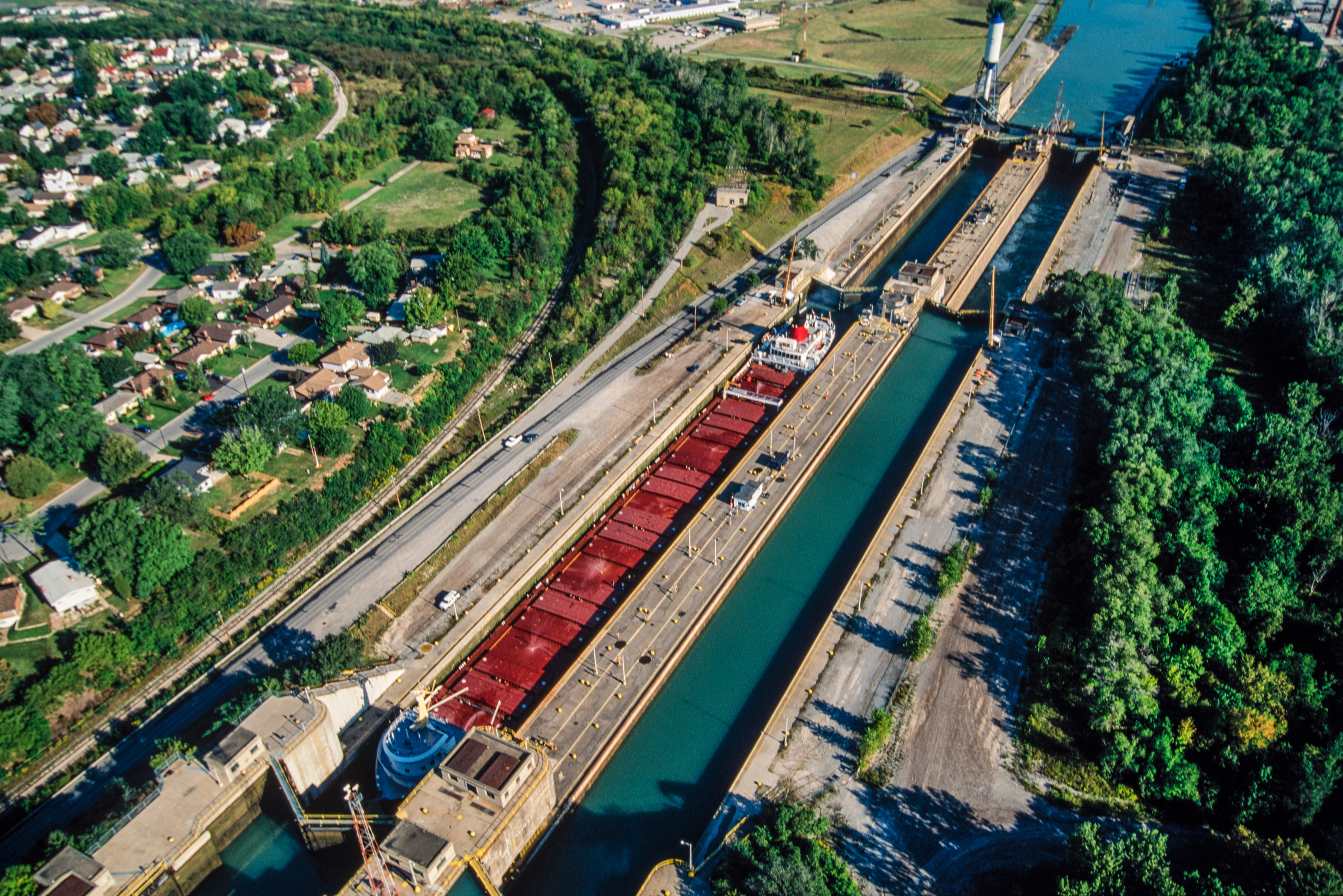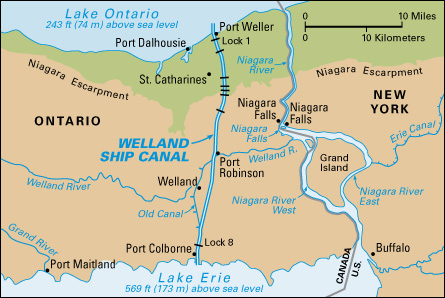Welland Ship Canal is one of Canada’s greatest engineering projects. It forms an important part of the St. Lawrence Seaway. The canal provides a navigable waterway 27 miles (44 kilometers) long between Lake Ontario and Lake Erie. The only natural connection between the two lakes is the Niagara River. But falls and rapids make much of the river useless as a commercial waterway.


The Welland Canal extends from Port Weller on Lake Ontario to Port Colborne on Lake Erie. Lake Erie is about 326 feet (99 meters) higher than Lake Ontario, so ships must be raised and lowered by locks. This is done by a series of eight locks.
The project to connect Lake Ontario and Lake Erie was completed in 1829. The original canal was built by a private company, with help from government loans, and cost about $7,700,000. It extended from Port Dalhousie, just west of Port Weller, on Lake Ontario to Port Robinson on the Welland River. From Port Robinson, southbound ships sailed east along the Welland River to the Niagara River, and then went south along the Niagara to Lake Erie. But in 1833, workers completed an extension of the canal that stretched from Port Robinson south to Port Colborne (then called Gravelly Bay).
In a short time, the shipping industry wanted a larger waterway. In 1839, the project was taken over by the government of Upper Canada, which later became the province of Ontario. The canal was greatly enlarged by 1845, and enlarged further by 1887. In 1912, the Canadian government began improvements that eventually resulted in the Welland Ship Canal of today. The canal officially opened on Aug. 6, 1932. It cost $130 million.
A reforestation project has been developed along the canal route to protect vessels from crosswinds. Loading docks service cities and factories along this route. The canal carries about 65 million short tons (60 million metric tons) of freight a year. It can be used by the largest bulk carriers on the Great Lakes. Ships can sail through the new canal in 8 hours or less, compared to the 16 hours required over the old waterway.
In 1973, workers completed a $110-million project to straighten and widen about 8 miles (13 kilometers) of the canal. The project also included the construction of several tunnels and bridges.
